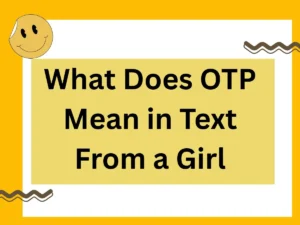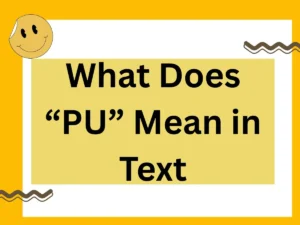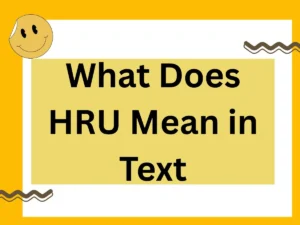This will go far deeper than the generic, surface-level definitions you see online. We’ll explore its origins, multiple contexts, tone nuances, audience sensitivity, and — most importantly — 10 superior alternatives that can be used in polite, professional, and casual communication without risk of misinterpretation.
🔥 Rizz Line Generator 🔥
Let’s begin.
What Does “KMS” Mean in Text?
KMS in digital messaging typically stands for “Kill Myself” — a slang expression often used figuratively to convey frustration, embarrassment, or disbelief.
In 2025, the term is still present in online conversations, but its social perception has shifted. Mental health awareness campaigns have led to increased caution around using KMS casually, especially in public posts. Many now opt for gentler alternatives to avoid misunderstandings or triggering content.
Two Primary Contexts of “KMS” in 2025
- Figurative, exaggerated expression
Used informally to mean:- “I’m so embarrassed”
- “That’s so awkward”
- “I can’t handle this”
Example: - Friend sends you a cringy childhood video.
You reply: “Omg… kms 💀.”
- Literal, serious context
In rare cases, KMS can be a genuine expression of suicidal ideation. This is critical to recognize — if used in this sense, it should always be taken seriously and addressed with care.
💡 2025 Update:
Online platforms such as TikTok, Instagram, and X (formerly Twitter) have implemented automatic moderation that flags KMS when detected in text, prompting the user with suicide prevention resources. This change means the term is less likely to be seen casually on public platforms and more often confined to private chats or niche communities.
Why Context and Tone Matter
The difference between lighthearted and serious usage comes down to tone, setting, and audience.
- Tone indicators (e.g., “/j” for joking, “/srs” for serious) are increasingly common in 2025 to help clarify intent.
- Emojis often soften tone (“kms 😂” reads differently from “kms.”).
- Audience familiarity matters — what’s fine with a close friend may be misread by a coworker.
Should You Use “KMS” in 2025?
While it remains common in certain circles, the trend is shifting toward avoiding it in favor of expressions without harmful connotations.
Risks of casual use include:
- Misinterpretation by those unfamiliar with slang context.
- Triggers for people with lived experience of suicidal thoughts.
- Violation of workplace or school communication guidelines.
Safer choice: Replace it with context-appropriate alternatives that still capture the intended emotion.
10 Polite, Professional, and Casual Alternatives to “KMS”
Here’s where we upgrade your vocabulary. These are clear, tone-matched replacements for “KMS” that preserve the emotional punch while removing risk.
1. “I can’t even”
- Tone: Casual, friendly
- Example: “You actually wore matching banana costumes? I can’t even.”
2. “That’s too much”
- Tone: Playful or sympathetic
- Example: “Your dog just ate the wedding cake? That’s too much.”
3. “I’m speechless”
- Tone: Works in professional and casual settings
- Example: “They approved the budget in one meeting — I’m speechless.”
4. “This is overwhelming”
- Tone: Professional, empathetic
- Example: “The new system rollout is overwhelming, but we’ll manage.”
5. “I’m done”
- Tone: Casual frustration or amusement
- Example: “The cat just opened the fridge by itself… I’m done.”
6. “I can’t handle this”
- Tone: Informal, emotionally expressive
- Example: “That plot twist? I can’t handle this.”
7. “That’s unbearable”
- Tone: Formal or semi-formal
- Example: “The noise level from construction is unbearable.”
8. “I’m losing it”
- Tone: Playful, stressed, or shocked
- Example: “He actually proposed in a Pikachu onesie. I’m losing it.”
9. “This is too intense”
- Tone: Professional and casual adaptability
- Example: “The negotiations got too intense — we needed a break.”
10. “I’m at my limit”
- Tone: Formal, professional, or serious personal expression
- Example: “After three all-nighters this week, I’m at my limit.”
How to Choose the Right Alternative
When deciding which replacement to use, apply these 2025 communication guidelines:
- Assess the relationship: Use lighter, funnier phrases with friends; opt for neutral, clear language in professional spaces.
- Mind emotional impact: Avoid anything that could be mistaken for self-harm language unless the audience knows the context.
- Match the medium: Text and chat allow more flexibility than official documents or public posts.
- Adapt to the topic: A serious situation calls for sincerity, not dramatic slang.
Recognizing Serious Use of “KMS”
If someone uses KMS in a way that might indicate real distress, here’s the safest course in 2025:
- Respond with care: Ask directly if they are feeling okay.
- Encourage them to seek help.
- Use available resources: Many messaging platforms now include direct crisis hotline links when flagged terms appear.
📞 US 988 Suicide and Crisis Lifeline – Call or text 988
📞 UK Samaritans – Call 116 123 (freephone)
📞 Lifeline Australia – Call 13 11 14
Final Word
“KMS” has evolved from a niche internet abbreviation to a widely recognized phrase with layered meaning — some lighthearted, some serious.
In 2025, social responsibility in language is more important than ever. Choosing words that convey your feelings without risking misinterpretation isn’t just about politeness — it’s about clarity, empathy, and connection.
The smart communicator knows when slang works, when it doesn’t, and how to pivot seamlessly to an alternative. That’s how you keep conversations engaging and respectful.





